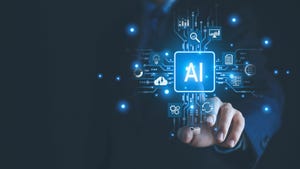Revising The World of Self-Service With Natural Language Processing
May 10, 2019

by Jelani Harper
SAN FRANCISCO - The ascension of natural language processing through the ranks of artificial intelligence technologies is fairly evident. Its consumerization is demonstrated in a number of audio-related household gadgets, it’s found in the most effective text analytics tools, and it’s an integral aspect of speech recognition systems.
Still, NLP is arguably producing the greatest impact on the enterprise in furthering the self-service movement, particularly in terms of the various implements required for Business Intelligence.
According to MicroStrategy VP of Product Marketing Vijay Anand, however, the business value delivered by NLP hinges on more than simply comprehending the intention of the user: “Even with natural language queries and Alexa and all of these natural language tools, the problem of the deficit of these tools as we examine it [is] while it’s easy to ask a question, I, for one, certainly believe that most people don’t know what the right question is. You need to have that sort of understanding of the business to ask the correct question to get the right answer, first of all.”
More than just a convenient interface, NLP is impacting the realm of self-service by considerably helping business users get to the right question—and delivering answers in ways laymen understand.
Related: How to build, train, test, and deploy a machine learning model
Natural language querying
The primary way NLP is simplifying the self-service world to help the business ask the right questions in expedient time frames is by accelerating the data discovery process, which some consider akin to self-service itself. To optimize queries in natural language, it’s necessary for users to have the proper data assembled to even know which questions are pertinent to ask.
In this respect, NLP is a handy addition to Business Intelligence instruments for analysts “to build a dashboard,” Anand explained. “So, top three sales people in North Carolina, and it generates a bar chart or a grid based on the queries. It selects the most ideal or appropriate chart and it presents the data.”
In the preceding use case, queries are issued in natural language (as opposed to with code) and produce a visual response in the form of dashboards. Once those dashboards are automatically constructed, users will know which questions are most apposite to their business cases based on this information.
Again, NLP enables them to deliver those queries in natural language for a rapidity of questions and answers. “From a building standpoint also, it sort of gives you recommendations for what you can build on, and it will generate these graphs based on a natural language query both for an end user consumer and also for the analyst as well,” Anand mentioned.
Related: Best practices for holding AI accountable
Natural language generation
Although it relies on NLP, NLG is widely considered NLP’s opposite because, instead of comprehending natural language, NLG produces responses in natural language. NLG is further simplifying self-service by issuing summarizations of the significance of BI tools and data visualizations.
Textual explanations (courtesy of NLG) accompany the production of visualization mechanisms such as dashboards in competitive BI platforms. “Imagine you have a chart and there’s like five findings from it that can be written out in bulleted text form,” Anand said. “The product automatically generates that summary for you and if you want more details, it’s able to automatically do that.”
The potential for NLG in terms of analytics is vast. Some analytics options can even help to reinforce various aspects of explainability with these NLG narratives, further clarifying results for users focused more on business than on statistics.
Search and recommendations
The effects of NLP and NLG are widespread when it comes to applications of natural language querying for business users. By using NLP to simplify the process for search, for example, self-service BI mechanisms are invaluable to business users.
“If you search for business terms, it finds the right application, dashboard or report that has the right data you’re looking for,” Anand said. “But the name of the report is not the name of that dimension; it’s a business query in natural language. It makes recommendations based on other content that other people might’ve built or published. ”
Due to its faculty for facilitating natural language queries, search, and natural language recommendations and explanations, NLP is catapulting the self-service movement in ways that are most meaningful to business users. As such, it’s propelling self-service forward in a manner that nicely complements AI’s propensity to do so in general.
“Self service’s advent was in the 2012 timeframe: five to eight years ago when newer tools, data discovery tools, popped up in the market,” Anand asserted. “Businesses got a lot more interested in creating dashboards on their own. Of course, self-service tools got easier over time with natural language queries, for instance, and natural language search capabilities.”
With the enterprise use of NLP continuing to expand, self-service is bound to get even easier in the near future.
Jelani Harper is an editorial consultant servicing the information technology market, specializing in data-driven applications focused on semantic technologies, data governance and analytics.
About the Author(s)
You May Also Like


.jpg?width=700&auto=webp&quality=80&disable=upscale)
.jpg?width=700&auto=webp&quality=80&disable=upscale)
.jpg?width=700&auto=webp&quality=80&disable=upscale)




